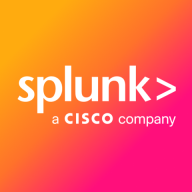

Splunk Enterprise Security and Elastic Security are both key players in the field of machine data analysis and security. Splunk seems to have an advantage in advanced features like Search Processing Language (SPL) and operational intelligence, while Elastic Security offers a cost-effective, highly customizable solution ideal for smaller organizations.
Features: Splunk Enterprise Security offers rapid log searching, advanced data visualization, and comprehensive monitoring capabilities. It supports schema-on-read technology and provides immediate insights. Elastic Security excels in open-source integration, flexible setups, and quickly indexes large volumes of data with robust search and analysis capabilities.
Room for Improvement: Splunk could improve in user interface intuitiveness and cluster management, and it has issues with documentation and support consistency. Elastic Security can improve its integration with legacy applications, expand built-in workflows, and reduce the learning curve for complex queries.
Ease of Deployment and Customer Service: Splunk provides robust on-premises and cloud deployment with mixed customer service reviews based on region. Elastic Security's deployment is flexible and open-source, requiring more technical expertise. Community support is strong, but enterprise-level customer service is less comprehensive.
Pricing and ROI: Splunk is known for its high cost, with a tiered pricing model tied to data volume that can be challenging, but offers high ROI in large environments. Elastic Security provides a budget-friendly option, saving costs with open-source capabilities, making it suitable for smaller organizations.
It does not require hefty security budgets and can be deployed for enterprise security effectively.
Splunk's cost is justified for large environments with extensive assets.
Most of the time when my team encounters issues, they receive responses within 24 hours.
Support is prompt and helpful.
If you want to write your own correlation rules, it is very difficult to do, and you need Splunk's support to write new correlation rules for the SIEM tool.
The technical support for Splunk met my expectations.
It allows us to think about specific use cases, such as gathering malicious IPs in a single view and analyzing threats based on geolocation.
It is easy to scale.
They struggle a bit with pure virtual environments, but in terms of how much they can handle, it is pretty good.
In terms of stability, I would rate Elastic a solid eight out of ten.
It provides a stable environment but needs to integrate with ITSM platforms to achieve better visibility.
It is very stable.
CrowdStrike and Defender have more established threat intelligence integration due to having a larger client base.
My security testing team continuously reports vulnerabilities, and we have to fix and update the versions frequently.
Elastic Security consumes a lot of resources, requiring a substantial deployment setup.
Splunk Enterprise Security would benefit from a more robust rule engine to reduce false positives.
What Splunk could do better is to create an API to the standard SIEM tools, such as Microsoft Sentinel.
Data retention can be better. If we want to look at the data for five months or six months, that is not available to us. We only have a history of 20 or 30 days.
This is beneficial for SMEs as they do not need extensive budgets for security solutions.
The pricing is reasonable, especially for Small Medium Enterprises (SMEs), making it a viable option for businesses building their security infrastructure.
Elastic Security is considered cost-effective, especially at lower EPS levels.
The platform requires significant financial investment and resources, making it expensive despite its comprehensive features.
I saw clients spend two million dollars a year just feeding data into the Splunk solution.
Splunk is priced higher than other solutions.
The platform provides more visibility and requires less effort in monitoring.
Elastic Security is as flexible and configurable as Microsoft Sentinel.
We require rapid processing speed for alerts and event data, and Elastic Security is very efficient at handling this level of data.
This capability is useful for performance monitoring and issue identification.
They have approximately 50,000 predefined correlation rules.
Splunk Enterprise Security's most valuable features are its stability and the robust Splunk Search Processing Language.


Elastic Security combines the features of a security information and event management (SIEM) system with endpoint protection, allowing organizations to detect, investigate, and respond to threats in real time. This unified approach helps reduce complexity and improve the efficiency of security operations.
Additional offerings and benefits:
Finally, Elastic Security benefits from a global community of users who contribute to its threat intelligence, helping to enhance its detection capabilities. This collaborative approach ensures that the solution remains on the cutting edge of cybersecurity, with up-to-date information on the latest threats and vulnerabilities.
Splunk Enterprise Security is widely used for security operations, including threat detection, incident response, and log monitoring. It centralizes log management, offers security analytics, and ensures compliance, enhancing the overall security posture of organizations.
Companies leverage Splunk Enterprise Security to monitor endpoints, networks, and users, detecting anomalies, brute force attacks, and unauthorized access. They use it for fraud detection, machine learning, and real-time alerts within their SOCs. The platform enhances visibility and correlates data from multiple sources to identify security threats efficiently. Key features include comprehensive dashboards, excellent reporting capabilities, robust log aggregation, and flexible data ingestion. Users appreciate its SIEM capabilities, threat intelligence, risk-based alerting, and correlation searches. Highly scalable and stable, it suits multi-cloud environments, reducing alert volumes and speeding up investigations.
What are the key features?Splunk Enterprise Security is implemented across industries like finance, healthcare, and retail. Financial institutions use it for fraud detection and compliance, while healthcare organizations leverage its capabilities to safeguard patient data. Retailers deploy it to protect customer information and ensure secure transactions.
We monitor all Security Information and Event Management (SIEM) reviews to prevent fraudulent reviews and keep review quality high. We do not post reviews by company employees or direct competitors. We validate each review for authenticity via cross-reference with LinkedIn, and personal follow-up with the reviewer when necessary.